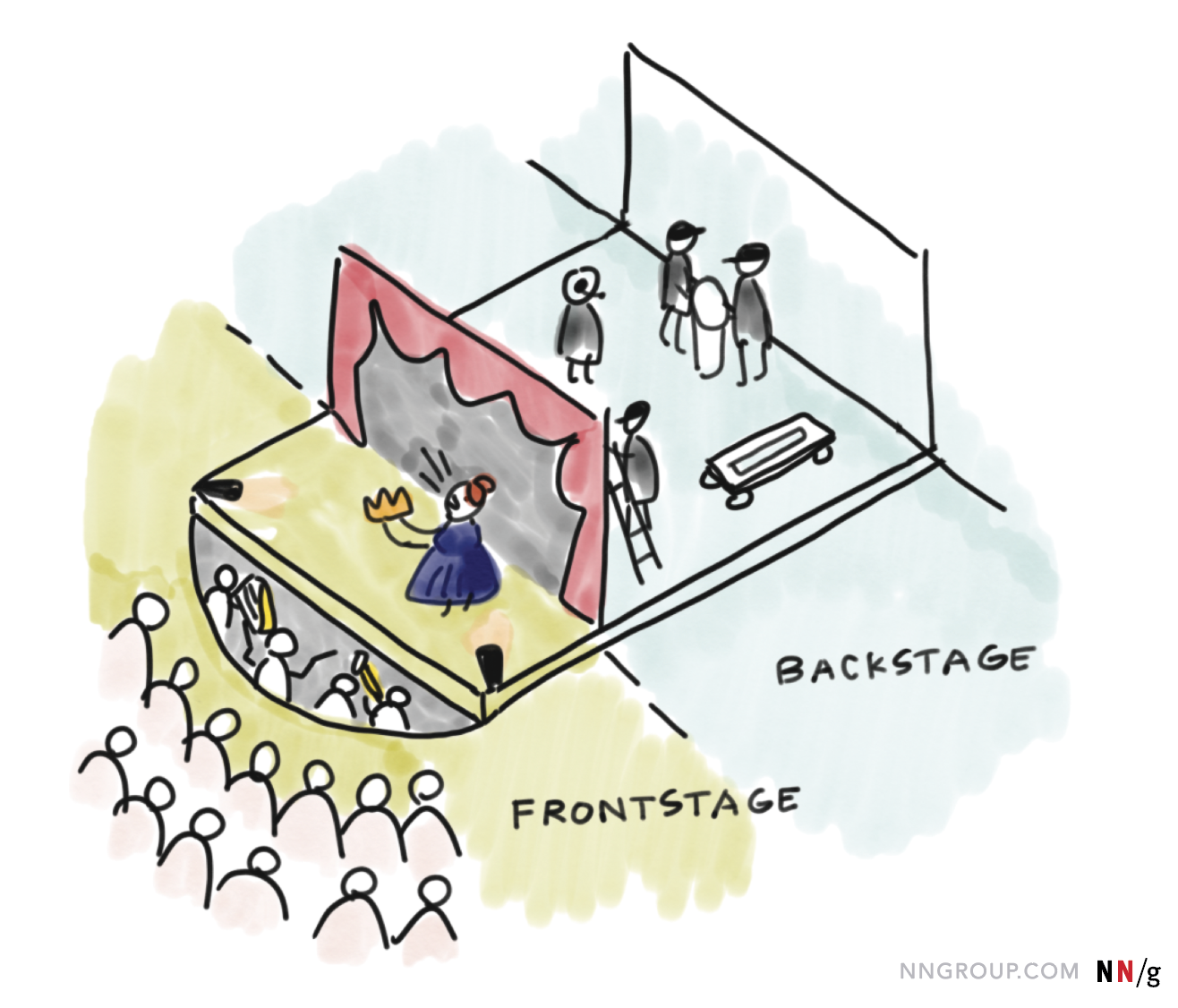Service Design
Get the full picture on how your users experience your organization.
Service design is not simply writing up technical plans for a new digital service.
Service design addresses how an organization gets something done – the internal processes employees go through to accomplish an action – as well as the touchpoints that make up a customer’s journey.
"Service design" could be described as "designing how we go about serving our customers." This certainly involves the customer's experience as one of the major outcomes, such as how the backstage crew enables the front-stage cast to put on a performance for an audience.

But service design also gives attention to the flow of communication, roles and responsibilities, policies and procedures – all of which enable the organization to serve its customers in an organized and confidence-instilling way.
Benefits of Service Design
A lot of businesses and organizations spend most of their time and money on the customer experience. It is easy to understand why: if the customer experience is poor, the organization's revenue will suffer. But if the employee experience is poor or confusing, backstage problems will have negative front-stage consequences.
Service design can help organizations to:
- Identify conflict or breakdown in communication. By taking into account all of the processes that run an organization, it is possible to see where conflicts occur from misaligned priorities or assumptions.
- Have difficult conversations. Discussing procedures and policies can help to expose areas of weakness or misunderstanding, and can enable organizations to forge better processes that help everyone work together more closely.
- Reduce redundancies. If communication is lacking, different parties may have taken it upon themselves to create their own systems, which can lead to confusion over who has the "real" information. By mapping out the whole internal world can help to pinpoint duplicate efforts and wasted resources.
- Build relationships. An organization will run best when its people understand and trust each other. By establishing a bird's-eye view of an organization's operations, its various parties can come to understand their particular contributions as necessary parts of the whole. Like in a theatrical performance, memorizing lines won't matter much if the lighting crew was left out of rehearsal.
